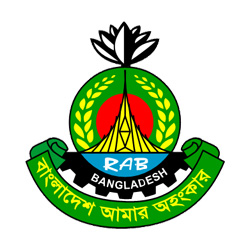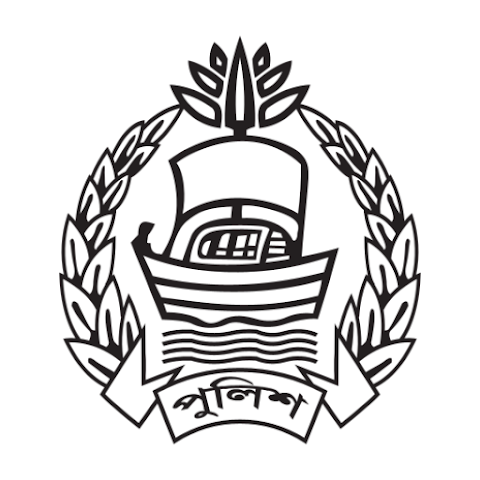Jute Farming System Research Achievements
- Rahman, M.A., S.K. Das, M.F.H. Pradhan, M.E.R. Chowdhury, M.M. Rahman, M.R. Islam, L. Majumder, 1989. Identification of farmer’s predominant profitable cropping patterns.
Several farmers’ predominant cropping patterns were tested at different farming system research sites and avenues for their improvement. Improvement of the patterns was sought through introducing either new crop or improving crop management techniques. Among eight such patterns Jute (O-9897)-Fallow-Brinjal (Uttara) has been accepted by the farmers at Vaskarkhilla, Kishoreganj for rainfed high land against their traditional Jute (O-4)-Fallow-Brinjal (Local) pattern. At the same time (i) Jute (CC-45)-Fallow-Garlic (Local) at Vaskarkhilla, Kishoreganj (ii) Jute (O-9897)-Fallow-Lentil (L-5)/Mustard (SS-75) and (iii) Sugarcane (SD-16)+ Lentil (L-5) at Kanaipur, Faridpur showed promising results.
2. Rahman, M.A., S.K. Das, M.F.H. Pradhan, M.E.R. Chowdhury, M.M. Rahman, M.R. Islam, L. Majumder, 1989. Testing of advance lines/varieties developed of field crops in research institutions at farmer’s field.
Different advanced lines/varieties developed of major crops by research organizations were tested at farmer’s field in all the four farming system research sites during last three years to identify the varieties with desired yield, duration, disease, pest and drought resistance for cultivation under specific environment. Olitorius jute (O-9897) and Capsularis line (CVL-1) showed highest profitability at Kalampur, Manikganj condition with their first alternatives of Mutant and D-154 respectively. At Vaskarkhilla, Kishoreganj environment Mutant (Olitorius jute), CC-45 (Capsularis), BR-11 (T.Aman), Kanchan (Wheat) standed as most profitable where O-9897, CVL-1, Pajam and Akbar were their first alternatives respectively. Jute varieties O-9897 for Olitorius and D-154 for Capsularis became most profitable in Kanaipur, Faridpur condition where Mutant and Dhabdhabey standed for their respective first alternatives. In Paglapir, Rangpur environment Mutant (Olitorius jute), CVE-3 (Capsularis), FCV Special (Virginia Tobacco) and S.M. Venghi (Divi Tobacco) showed most profitability with their first alternatives as Chaitali (Olitorius jute), CC-45 (Capsularis jute), Suravi (Virginia Tobacco) and Venghi (Divi Tobacco).
3. Rahman, M.A., S.K. Das, M.F.H. Pradhan, M.E.R. Chowdhury, M.M. Rahman, M.R. Islam, L. Majumder, 1989. Intercropping of suitable vegetables with late jute seed crop at farmers homestead.
In intercropping practices with late jute seed production at homestead area showed that Jute seed + Lalsak was the most suitable combinant followed by the Jute seed + Chili at Vaskarkhilla, Kishoreganj. Jute seed + Amaranthus was found most suitable at Kalampur, Manikganj whereas Jute seed + Lalsak was found more viable combinant at Paglapir, Rangpur.
4. Rahman, M.A., S.K. Das, M.F.H. Pradhan, M.E.R. Chowdhury, M.M. Rahman, M.R. Islam, L. Majumder, 1989. Utilization of jute retting ditches during Rabi season.
Experiment on utilization of jute retting ditches for rabi crops showed that it is possible to grow Taro + Potato intercropping in jute retting ditches at Kalampur, Dhaka and it was observed that 20224 pieces of Taro along with 1.80 ton of runner from one hectare could be grown. The yield of potato was found 6.24 ton/ha. At Paglapir, Rangpur site Pani Kachu + Onion combination contributed maximum yield (17778 pieces of Pani Kachu + 3.5 ton of onion from a hectare), which yielded economic return of Tk. 79554 from a hectare.
5. Rahman, M.A., S.K. Das, M.F.H. Pradhan, M.E.R. Chowdhury, M.M. Rahman, M.R. Islam, L. Majumder, 1989. Pre production evaluation of promising cropping patterns.
The promising patterns in terms of higher total yield and economic benefit were studied in the trials at MLT and PPP to verify their agronomic and economic performances in the extrapolation area of similar agro-climatic environment. Multi-location testing of cropping pattern Jute – T.Aman/ Khesari was organized at five Upazillas of greater Mymensingh district (Bajitpur, Karimganj, Fulpur, Netrokona and Pakundia) by the supervision of Farming System Research team of Vaskarkhilla and Department of Agricultural Extension (DAE). Yield of Jute and T.Aman was found higher (2.94 and 4.91 t/ha respectively) from the improved (FA) pattern than local (F) pattern (2.12 and 3.64 t/ha) respectively for jute and T.Aman. Khesari was damaged due to heavy rainfall. Economical performance showed that Jute and T.Aman of FA pattern provided 46% and 34% higher gross margin than same crop of F pattern.
6. Rahman, M.A., S.K. Das, M.F.H. Pradhan, M.E.R. Chowdhury, M.M. Rahman, M.R. Islam, L. Majumder, 1989. Dissemination of promising cropping patterns.
A mini pilot production dissemination program of cropping pattern Jute-T.Aman-Wheat was organized around Farming System Research (FSR) site, Vaskarkhilla through field day. A large number of farmers from nearby areas were participated in the program. The yield obtained from Jute, T.Aman and Wheat were 2.62, 3.45 and 2.08 t/ha respectively. It was found that gross margin obtained Tk. 38,362.00 per hectare with benefit cost ration 2.59. Similar program was repeated at FSR site Kalampur under Dhamrai upazilla of Manikgonj district. Jute and Wheat gave 2.30 and 1.52 t/ha yield respectively. T.Aman was completely damaged by flood and comparatively low yield were observed because farmers especially in case of Jute did not follow full package of technology.
7. Rahman, M.A., S.K. Das, M.F.H. Pradhan, M.E.R. Chowdhury, M.M. Rahman, M.R. Islam, L. Majumder, 1989. Assessment and development of poultry production at Kalampur, Manikgonj FSR site.
Assessment studies on poultry development and production were conducted at FSR site of Kalampur under Manikgonj district. White Leg Horn (WLH), Black Plymouth (BP), Rhode Island Red (RIR) and local breed of poultry were supplied to the farmers at Kalampur to identify the most suitable one through hatchability, survivability and productivity. Maximum hatchability was observed with the local breed (92%) followed by BP and WLH (each 67%). Maximum survival rate was observed for RIR (75%) followed by both WLH and local breed with very close value. Mortality due to disease was not found for RIR and BP but low rate 13 and 18% were observed for WLH and local breed respectively. Highest body weight of BP 724 gm followed by WLH (683 gm) and RIR (526 gm) were observed at 90 days of age respectively.
8. Rahman, M.A., S.K. Das, M.F.H. Pradhan, M.E.R. Chowdhury, M.M. Rahman, M.R. Islam, L. Majumder, 1989. Assessment study of the development and production of poultry at Kanaipur, Faridpur FSR site.
An assessment study on poultry development and production was conducted at FSR site of Kanaipur under Faridpur district. Deshi (cross), Rupali, RIR and WLH breeds of poultry were supplied to the 55 randomly selected farmers. It was observed that the highest hatchability (86%) was found in case of RIR + Deshi breeds followed by Austarlop + Deshi breeds (74%) and lowest value was observed for Rupali breeds (56%). Average body weights of the breeds at 12th week were observed 212, 250, 251, 240 and 245 gm respectively for Deshi, Austarlop + Deshi, RIR + Deshi, Rupali and WLH. The highest individual weight was observed at the age of 12 weeks for WLH (327 gm) followed by Deshi (272 gm). It was also observed that 80% Deshi, 63% Austarlop + Deshi, 68% RIR + Deshi, 60% Rupali and lowest 38% WLH survived under farmer’s condition.
9. Rahman, M.A., S.K. Das, M.F.H. Pradhan, M.E.R. Chowdhury, M.M. Rahman, M.R. Islam, L. Majumder, 1989. Assessment of the prevalence of parasites in the cattle body at FSR Kanaipur, Faridpur.
To identify the prevalence of parasites in the body of cattle, a study was under taken at FSR site Kanaipur under Faridpur district. It was observed from the result obtained that the highest percentage of cattle (38%) was affected by stomach worm followed by paramphistomum (17%) and lowest (3%) by strongylodies. Fifty seven percent of the total studied cattle were found free from any king of parasite.
10. Rahman, M.A., S.K. Das, M.F.H. Pradhan, M.E.R. Chowdhury, M.M. Rahman, M.R. Islam, L. Majumder, 1989. Effect of complete de-worming on growth and development of young cattle stock.
A study on the effect of complete de-worming on young stock was conducted at FSR site Vaskarkhilla under Kishoregonj district. It was observed that the liver flock, paramphistomum, stomach worm, round worm, ascaries and monezia were prominent in the young stock. But liver flock was observed maximum (75%) followed by paramphistomum (50%). The worm monezia was found as the lowest (10%) only with the young stock. Fifteen young stocks were treated by Embavet-DB with vitamin and observed that the rate of growth was higher with the treatment of internal parasites plus vitamin followed by the treatment removal of parasites without vitamin.
11. Rahman, M.A., S.K. Das, M.F.H. Pradhan, M.E.R. Chowdhury, M.M. Rahman, M.R. Islam, L. Majumder, 1989. Agro-economic performance of selected winter vegetables in homestead area at Kalampur, Manikgonj.
A survey study was conducted on agro-economic performance of selected winter vegetables in homestead area at FSR site, Kalampur, Manikgonj. It was observed from the result obtained that the utilization pattern of homestead area under winter vegetables utilization varied according to farm categories. Diversified method of utilization was observed in case of marginal and small farmers. Major vegetables grown in homestead area are Lalshak, Brinjal, Amaranthus, and Bottle Gourd Beans. Almost all farm categories did not follow the recommended practices of vegetables production. The main problem is the lack of knowledge about modern technologies along with money, good seeds, healthy seedlings and disturbance of livestock and poultry.
12. Rahman, M.A., S.K. Das, M.F.H. Pradhan, M.E.R. Chowdhury, M.M. Rahman, M.R. Islam, L. Majumder, 1989. Assessment of biomass fuel production and utilization system at homestead level.
A study of biomass fuel production and utilization system at FSR sites Kalampur, Manikgonj and Vaskarkhilla, Kishoregonj was conducted. Results showed that homestead area is the main source of biomass fuel for all farm categories. Cow dung cakes and cow dung sticks are the most frequently used biomass fuel followed by jute sticks and Dhaincha. The least frequently used biomass fuels were rice straw, bamboo and other crops straw. Most of the landless farmers considered biomass fuel problem as a major problem.
13. Rahman, M.A., S.K. Das, M.F.H. Pradhan, M.E.R. Chowdhury, M.M. Rahman, M.R. Islam, L. Majumder, 1989. Assessment of the existing poultry production and utilization at farm level.
To evaluate the existing poultry production and utilization system a study was conducted at the FSR site, Kalampur, Manikgonj. Results showed that all the farm categories rear poultry according to local indigenous technology. Adoption percentage of improved technologies increased with the farm size increment. Farmers followed the local technologies as a result they used to get poor yield. Average egg production per hen per year was found 85 and per duck was found 94%. Housewife was the main caretaker of the poultry and husband helps them to sell the product in local market. Most of the farmers kept their poultry (jointly chicks and ducks in unhygienic condition) inside the dwelling house due to the thieves. Most of the farmers did not use poultry ration due to the lack of knowledge about it. Household wastages are the main source of poultry feed. Eggs are preserved in earthen pot and basket on rice husk by most of the farmers.
14. Rahman, M.A., S.K. Das, M.F.H. Pradhan, M.E.R. Chowdhury, M.M. Rahman, M.R. Islam, L. Majumder, 1989. Survey and analysis on price of agricultural commodities.
Study on survey of price analysis of different agricultural commodities was conducted at FSR sites Kalampur, Manikgonj and Vaskarkhilla, Kishoregonj. Results showed that the price of different agricultural commodities raised during flood season (July to October) though the human and animal labor rates felt down during this period. Other months of the year the price of agricultural commodities are more or less same irrespective of human and animal labor rates. Also the price of commodities/products felt down at the harvesting time and rose at natural calamities like drought and flood, which affected the production and transportation of agricultural products.
15. Rahman, M.A., M.A. Mannan, M.A.K. Azad, M.M. Rahman, M.E.R. Chowdhury, M.R. Islam, L. Majumder, and R. Islam, 1990. Testing of two alternative cropping patterns in high land under rain fed condition at Kalampur (Manikgonj) farming system research site.
At Kalampur (Manikgonj) farming system research site two alternative cropping patterns were tested against farmers existing patters to improve the pattern through either introduction of new crops or crop management practices. Jute (O-9897)-Radish (Tasakisan)-Potato (Diamond)+Lalsak+ Sweet gourd against farmers existing patterns Jute (O-4)-Fallow-Potato (Local) and Jute (O-9897)-Mungbean (Local)-Wheat (Kanchan)+Lentil (L-5) against farmers Jute-Fallow-Wheat were tested. The farmer’s pattern gained 128% higher gross return with only 27% higher cost for improved crop management practices. The improved patterns earned 198% gross margin with 20% additional cost involvement.
16. Rahman, M.A., M.A. Mannan, M.A.K. Azad, M.M. Rahman, M.E.R. Chowdhury, M.R. Islam, L. Majumder, and R. Islam, 1990. Testing of two alternative cropping patters in medium high land at Kalampur (Manikgonj) farming system research site.
Two alternative patterns Jute (O-9897)-T.Aman (BR-11)-Potato (Diamond) + Tobacco (Nc-395) and Jute (O-9897)-T.Aman (BR-11)-Potato (Diamond) + Amaranthus were tested in medium high land against farmers pattern Jute-T.Aman-Potato. In Jute-T.Aman-Potato+ Tobacco pattern farmers got 60%, 38% higher yield, in addition 7 t/ha tobacco was obtained. In this pattern the gross margin was 199% higher with only 15% higher cost. In Jute-T.Aman-Potato+ Amaranthus pattern the gross margin was 156% higher with 11% higher cost involvement. Here also the increased yield was 53%, 19% and 53% respectively.
17. Rahman, M.A., M.A. Mannan, M.A.K. Azad, M.M. Rahman, M.E.R. Chowdhury, M.R. Islam, L. Majumder, and R. Islam, 1990. Testing of two alternative cropping patterns in medium low land under rain fed condition at Kalampur (Manikgonj) farming system research site.
Two alternative cropping patterns B. Aus (Local)-Mustard (SS-75) and B. Aman (Local)-Mustard (SS-75) was tested against farmers existing B. Aus+ B. Aman-Mustard pattern. In farmers alternative pattern yield of B. Aus and Mustard increased 52% in both the cases and obtained 54% higher gross margin with 13% higher cost involvement. In B. Aman-Mustard pattern 56% higher yield was obtained in B. Aman. In this pattern the gross margin was 33% higher with only 7% higher cost involvement.
18. Rahman, M.A., M.A. Mannan, M.A.K. Azad, M.M. Rahman, M.E.R. Chowdhury, M.R. Islam, L. Majumder, and R. Islam, 1990. Testing of improved cropping pattern against farmers existing pattern in medium high land under partially irrigated condition at Kanaipur (Faridpur) farming system research site.
At Kanaipur (Faridpur) farming system research site one improved pattern Sugarcane (LSD-16) +Lentil (L-5) was tested against farmers pattern Sugarcane (IJC)+Lentil (Local). The improved pattern gave 40% higher gross margin with 24% extra cost. One alternative pattern Jute (O-9897)-T.Aman (BR-11)-Chickpea (Nabin) + Wheat (Barkat) was tested against farmers pattern Jute (O-4)-T.Aman (BR-11)-Wheat (Sonalika) in medium high land under partially irrigated condition. This pattern gave 46% higher gross margin with 10% extra cost.
Another alternative cropping pattern in medium high land under rain fed condition Jute (O-9897)-Mungbean (Mubarak)-Lentil (L-5)+Mustard (SS-75) was tested against farmers pattern Jute (O-4)-Fallow-Lentil+ Mustard. The alternative pattern gave 74% higher gross margin with 37% additional costs.
19. Rahman, M.A., M.A. Mannan, M.A.K. Azad, M.M. Rahman, M.E.R. Chowdhury, M.R. Islam, L. Majumder, and R. Islam, 1990. Intercropping late jute seed production with different winter vegetables.
Late jute seed production intercropping with different winter vegetables was tested at Kalampur (Manikgonj) and Kanaipur (Faridpur) farming system research sites. The best result obtained from Jute seed+ Lalshak combination. The maximum gross margin (Tk. 15776.00) obtained from Jute seed+ Lalshak at Kalampur and Tk. 50000.00 from the same at Kanaipur site.
Growing late jute seed crop at homestead area was also tested at Kalampur (Manikgonj) site. The average seed yield was obtained 550 kg/ha, which was economically profitable.
20. Rahman, M.A., M.A. Mannan, M.A.K. Azad, M.M. Rahman, M.E.R. Chowdhury, M.R. Islam, L. Majumder, and R. Islam, 1990. Adaptability testing of pre-released jute varieties through field trial.
Adaptability trials of Olitorius varieties were conducted at the farming system research sites of Kalampur (Manikgonj) and Kanaipur (Faridpur). Five released varieties were taken for field trials viz. O-4, CH-2, Mutant, Chaitali and O-9897. Results revealed that O-9897 gave highest average fibre yield (2.99 t/ha) followed by Chaitali (2.78 t/ha) at both of the research sites.
Another experiment on effect of Potash (K2O) on Jute (O-9897) was conducted at Kanaipur (Faridpur) farming system research site. It was observed no significant difference on fibre yield due to the application of Potash (K2O).
21. Rahman, M.A., M.A. Mannan, M.A.K. Azad, M.M. Rahman, M.E.R. Chowdhury, M.R. Islam, L. Majumder, and R. Islam, 1990. Assessing the farmers homestead area as the multipurpose production center.
Farmers homestead area mainly served as household consumption and source of supplementary income to poor farmers. Experiments were conducted to cultivate various vegetables in small homestead area to supplement the requirement of vitamins and minerals that are normally lacking in daily dishes of poor farmers.
At Kalampur (Manikgonj) site seven vegetables viz. Amaranthus, Okra, Indian spinach, Cucumber, Bitter gourd, Chinal and Ash gourd were grown in summer season and eleven vegetables viz. Radish, Lalshak, Beet, Carrot, Cauliflower, Cabbage, Kakrol, Tomato, Brinjal, Coriander and Chili were grown throughout the season. Results showed that average yield was maximum in Indian spinach (15.2 kg) in summer and maximum cash income was found in Okra (3200.00 Tk. /plot). In Rabi season Radish gave higher yield (24.6 kg) but cash income in Tomato (6800.00 Tk./plot).
Five patterns of vegetables were tested at Kanaipur (Faridpur) viz. (1) Radish-Chili- Danta, (2) Radish-Tomato-Okra+ Lalsak, (3) Lalsak-Batisak-Onion, (4) Radish-Batisak-Spinach and (5) Lalsak-Brinjal-Lalsak+ Batisak. Results showed that Radish-Tomato-Okra+ Lalsak gave maximum edible yield (62 kg/plot) and higher gross margin (Tk. 152.00/plot), followed by Radish-Chili-Danta.
22. Rahman, M.A., M.A. Mannan, M.A.K. Azad, M.M. Rahman, M.E.R. Chowdhury, M.R. Islam, L. Majumder, and R. Islam, 1990. Assessing the effect of Embavit-DB on milk production.
Milk production by milchcow whether affected by the treatment of Embavit-DB at the two farming system research sites Kalampur (Manikgonj) and Kanaipur (Faridpur) were assessed. Results showed that rate of milk production increased at the rate of 0.54 lit. when treated with Embavit-DB. The experiment was continued for 3 months and found that milk production increased after dropping the use of Embavit-DB, whereas the usual milk production remained the same for the control.
23. Rahman, M.A., M.A. Mannan, M.A.K. Azad, M.M. Rahman, M.E.R. Chowdhury, M.R. Islam, L. Majumder, and R. Islam, 1990. Improvement of cattle health through the deworming for better development of cattle production.
It was observed through an investigation on 450 cattle of different breed in five villages at farming system research site Faridpur that the parasitic infestation were found as Paramphistomen 84%, Stomach worm 46%, Fasciola 26%, Ascaris 11%, Moniezia 6%, Balantidium 6%, Coccidia 12%, Schistosoma Nasatics 12% and Thelazoma 14%. Total body weight gained in Group A (mixed infestation and control) 5 kg; in group B (having one type, Fasciola & untreated) 12 kg; in group C (having on type infestation and treated) 22 kg and in group D (mixed type infestation and treated) 32 kg.
24. Rahman, M.A., M.A. Mannan, M.A.K. Azad, M.M. Rahman, M.E.R. Chowdhury, M.R. Islam, L. Majumder, and R. Islam, 1990. Study on hatchability and survivality of Chicks under farmer’s condition.
A comparative study on hatchability and survivality of Chicks was conducted at farming system research site, Kanaipur (Faridpur) with 5 different breeds viz. Deshi, Austarlop, Rhode Island Red (RIR) and White Leg Horn (WLH). The experiment was divided into two sections. The first section was limited to hatchability of eggs and the second section concerned with survivality of day old to 3 months of age. Management care was provided with appropriate vaccination. The highest body weight (330 gm) gained by WLH, followed by Rupali (327 gm) with balanced diet practice. The highest mortality was observed in WLH (50%) followed by Rupali (40%), Austarlop (21%), RIR (17%) and Deshi (14%). Among the exotic breed RIR and Austarlop can be tried to improve the genetic potentiality of our indigenous birds at farmer’s condition.
25. Rahman, M.A., M.A. Mannan, M.A.K. Azad, M.M. Rahman, M.E.R. Chowdhury, M.R. Islam, L. Majumder, and R. Islam, 1990. Study on local market price analysis of different agricultural commodities.
A survey study on market price of different agricultural commodities and inputs was done at farming system research Kanaipur (Faridpur) to know the monthly price fluctuation. From the survey it was found that local market prices of fertilizer were higher than government sale price. The prices of all agricultural product felt down gradually just after harvest and rose when supply become limited. The labor wages both human and animal increased in sowing and harvesting period. In case of vegetables the early produces get higher price than the late growers. Prices of insecticides remained stable throughout the year.
26. Rahman, M.A., M.A.K. Azad, M.M. Rahman, M.E.R. Chowdhury, M.R. Islam, L. Majumder, R. Islam, 1991. Improvement of existing cropping pattern by introducing new varieties and crop management practices at Kalampur (Manikgonj) site.
At Kalampur (Manikgonj) farming system research site 3 experiments on 3 patterns were tested in high, medium high and medium low land under rain fed condition. The alternative cropping pattern Jute-Radish-Potato+ Lalsak+ Sweet gourd was tested against farmers pattern Jute/Aus-Fallow-Wheat/Potato in high land. The alternative pattern earned better gross margin (Tk. 55192.00) than farmers pattern (Tk. 34356.00), which is 60% higher.
Alternative pattern Jute-T.Aman-Potato+ Amaranthus was tested against farmers pattern Jute-T.Aman-Potato in medium high land and alternative pattern earned better gross margin (Tk. 63229.00) than farmers pattern (Tk. 38466.00), which was 64% higher.
Alternative pattern Jute (CC-45) +B.Aman (Jholdhan)-Mustard (SS-75) +Lentil (L-5) +Maize was tested against farmers pattern Jute/B.Aman-Mustard in medium low land. In alternative pattern the gross margin of Tk. 24974.00 was obtained which was much higher (almost double) than that of farmers pattern.
27. Rahman, M.A., M.A.K. Azad, M.M. Rahman, M.E.R. Chowdhury, M.R. Islam, L. Majumder, R. Islam, 1991. Improvement of existing farmers cropping pattern by introducing new varieties and crop management practices at Kanaipur (Faridpur) site.
At Kanaipur (Faridpur) farming system research site 3 experiments of alternative pattern were tested against farmers existing pattern. In high land under rain fed condition Sugarcane (ISD-16)+Lentil (L-5)+Mustard (SS-75) alternative pattern was tested against Sugarcane (Local)+Lentil (Local) farmers pattern. Alternative pattern gave 19% higher gross margin.
Jute (O-9897)-Mungbean (Mubarak)-Lentil (L-5) +Mustard (SS-75) alternative pattern was tested against farmer’s pattern of Jute (O-4)-Fallow-Lentil+ Mustard (both local) in medium high land. Introduction of Mungbean in alternative pattern gave additional yield (800.00 kg/ha), which earned 75% higher gross margin with 36% extra cost.
Jute (O-9897)-T.Aman (BR-11)-Wheat (Kanchan) +Chickpea (Nabin) alternative pattern was tested against farmers pattern of Jute-T.Aman-Wheat in medium high land. Alternative pattern gave 37% higher gross margin with 9% extra cost with BCR of 1:2.82.
28. Rahman, M.A., M.A.K. Azad, M.M. Rahman, M.E.R. Chowdhury, M.R. Islam, L. Majumder, R. Islam, 1991. Multilocation testing of promising technologies Jute (O-9897)-T.Aman (BR-11)-Potato (Diamond) + Amaranthus (Baspata).
Promising cropping pattern evolved from Kalampur (Manikgonj) farming system research site Jute (O-9897)-T.Aman (BR-11)-Potato (Diamond) +Amaranthus (Baspata) was taken up for Multilocation Testing in 3 Upazillas namely Saturia, Dhamrai and Manikgonj. Total gross margin from the pattern was found Tk. 71045.00 at Manikgonj, Tk. 41303.00 at Dhamrai and Tk. 55888.00 at Saturia. Economically accepted BCR was found from the result of the experiments.
29. Rahman, M.A., M.A.K. Azad, M.M. Rahman, M.E.R. Chowdhury, M.R. Islam, L. Majumder, R. Islam, 1991. Profitable production of different vegetables with late jute seed at farmers homestead garden.
The farmers’ especially low-income group (small and landless farmers) is suffering from serious mal nutrition. Different vegetables that contained nutrients can add a lot towards solving the farmer’s nutritional problems. Late jute seed production with different winter vegetables was tried at Kalampur (Manikgonj) and Kanaipur (Faridpur) farming system research sites. At Kalampur site best result was found from Jute seed+ Radish (Tk. 10851.00/ha) whereas at Kanaipur site highest income was found from Jute seed+ Red Amaranthus combination.
Year round vegetables production was also conducted at both of the farming system research sites Kalampur and Kanaipur to solve the nutritional problem of farmer’s family. At Kalampur site locally available vegetable seeds and seedlings were used for planting in the individual plots derived by splitting 5 numbers of 6m X 6m homestead area. Danta, Lalsak, Brinjal, Ladies finger, Cabbage, Radish, Chili, Indian spinach, Onion and Cauliflower were tested. Maximum yield was obtained (12 ka/plot) from Cabbage followed by Radish (10 kg/plot), Brinjal (7.5 kg/plot), Danta (7 kg/plot) and Indian spinach (5 kg/plot).
At Kanaipur site 5 patterns of (1) Corolla- Palong- Palong, (2) Spinach-Spinach-Radish, (3) Danta-Danta-Carrot, (4) Okra-Batisak and (5) Brinjal-Gimakalmi-Lalsak were tested. It was found that Danta-Danta-Carrot pattern gave maximum edible yield (30 kg/plot) followed by Okra-Batisak pattern (28.4 kg/plot) and Spinach- Radish pattern (24.4 kg/plot).
30. Rahman, M.A., M.A.K. Azad, M.M. Rahman, M.E.R. Chowdhury, M.R. Islam, L. Majumder, R. Islam, 1991. Study on problem and prospects of livestock production at farmers homestead level I. Kalampur (Manikgonj).
Three experiments were conducted at Kalampur (Manikgonj) farming system research site on (i) preservation of Aus straw during monsoon as livestock feed, (ii) raising of improved breed of Chicken under scavenging and (iii) study on the seasonal incidence of helminthes parasitic infestations in cattle.
It was observed that the straw color changes with the increased amount of urea application. Changed color increased the storage qualities of Aus straw but higher application of urea is toxic to cattle. Improved and local breed of Chicken (BPR) were grown under scavenging condition, BPR performed well under scavenging condition in respect of both body weight (Local 325 gm and BPR 724 gm) and economic return (Local Tk. 1800.00 and BPR Tk. 3360.00). Results from third experiment showed that of the helminthes group; Paramphistomum, Stomach worm, fasciola, Ascris, Coccidde infestation were common in cattle according to security. The experiment would help to take proper measure for elimination of helminthes in bovine.
31. Rahman, M.A., M.A.K. Azad, M.M. Rahman, M.E.R. Chowdhury, M.R. Islam, L. Majumder, R. Islam, 1991. Study on problem and prospects of livestock production at farmers homestead level II. Kanaipur (Faridpur).
Two experiments were conducted in Kanaipur (Faridpur) farming system research site on (i) production characteristics of some crossbreed chicken with their feasible adoption under farmer’s condition, (ii) introduction of new fodder species. It was found that highest survival rate was observed with Local (73%) and the lowest for WLH (55%). Among the cross breeds, Fayoumix Local shwed the highest survivability (64%), followed by Austerlop X Local (59%). Hatchability was maximum for local poultry birds (80%), followed by Fayoumi X Local (78%).The highest net return (Tk. 13416.00) was obtained from Austerlop X Local, followed by Fayoumi X Local (Tk. 13331.00) and the lowest was with Local (Tk. 8640.00). Fayoumi X Local found productive and profitable poultry breed at farmer’s level.
Experiment was conducted with different new fodder species namely Gliricides, Ipil Ipil, Boga and Cowpea according to the methodology suggested by BLRI. Germination rate of Cowpea was highest (87%), followed by Gliricidae (80%). Production of seed showed 2.5 kg/decimal for Cowpea at harvest with 21 kg/decimal Cowpea grass. Ipil Ipil attained the highest height (4.2 feet) and Gliricida was the lowest (1.8 feet).
32. Rahman, M.A., M.A.K. Azad, M.M. Rahman, M.E.R. Chowdhury, M.R. Islam, L. Majumder, R. Islam, 1991. Survey and price analysis of different agricultural commodities at farming system research site, Kanaipur (Faridpur).
One survey study was conducted at farming system research site Kanaipur (Faridpur). It was observed from the study that the price of all commodities fall down at peak harvesting period and the local market price of fertilizer was higher than the government price. The lowest price of potato as a major vegetable was found in the month of February and March.
33. Rahman, M.A., M.A.K. Azad, M.M. Rahman, M.E.R. Chowdhury, M.R. Islam, L. Majumder, R. Islam, 1991. Feasibility study of Tilapia (Oxechromis niloticus) cultivation in the farmer’s jute retting ponds/ditches at farming system research site Kanaipur (Faridpur).
Three jute-retting ponds were selected for Tilapia culture to develop technologies for utilization of seasonal ponds through culture of short cycle fish species. Phostoxin was applied to the jute retting water for killing predators followed by the lime application (300 kg/ha), organic manure and inorganic fertilizer with recommended dozes. Tilapia fingerlings were stocked on 1st October at a density of 20000 per hectare. Feeds were applied just after stocking at the rate of 6% of estimated body weight.
The average increase in body weight of individual fish was 62 gm with 95% survivality was found at the harvesting time within 4.5 months period. The gross production was 1383 kg/ha with net profit per hectare from Tilapia cultivation was Tk. 25912.00, which revealed the profitability of Tilapia cultivation in jute retting ditches.
34. Rahman, M.A., M.A.K. Azad, M.M. Rahman, M.E.R. Chowdhury, M.R. Islam, L. Majumder, R. Islam, 1991. Feasibility study of Thai Sarputi culture in the farmer’s jute retting ponds/ditches at farming system research site Kanaipur (Faridpur).
Three jute-retting ponds were selected for Thai Sarputi culture to develop technologies for utilization of seasonal ponds through culture of short cycle fish species. Phostoxin was applied to the jute retting water for killing predators followed by the lime application (300 kg/ha), organic manure and inorganic fertilizer with recommended dozes. Thai Sarputi fingerlings were stocked on 1st October at a density of 20000 per hectare. Feeds were applied just after stocking at the rate of 6% of estimated body weight. The fingerlings were stocked at a density of 16000 nos. per hectare.
Thai Sarputi was harvested after 140 days. The final weight of individual fishes was 28.2 to 55.0 gm and gross production were 358 to 717 kg per hectare.
35. Rahman, M.A., M.A.K. Azad, M.M. Rahman, M.E.R. Chowdhury, M.R. Islam, L. Majumder, R. Islam, 1991. Study of polyculture of Carps in the farmer’s pond.
Two ponds were selected for polyculture of Carps in Kanaipur (Faridpur) farming system research site under Faridpur district. Sizes of the ponds were area: 939 and 950 sq. m, depths: 2.5 m and 2.7 m respectively. Liming and fertilization were done as per recommendation. Stocking density of the fingerlings was 7500 per hectare of Silver carp; Ruhi; Katla; Mrigal and Mirror Carp with 3: 30: 10: 20: 100 ratios respectively. Supplementary feed was initiated just after release of fingerlings at the ratio of 60: 40 mixtures of rice bran and mustard oil cake. Daily feeding rate was 3% of the body weight of the fishes normally with the exception in low temperature (December-January), which was 1%.
It was observed after 5 month of stocking that the growth performance of Silver Carp was maximum (332 mm), followed by Mirror Carp (321 mm) and Katla (308 mm). On the other hand maximum body weight (405 gm) was observed for Mirror Carp, followed by Katla (315 gm) and Silver Carp (278 gm).
36. Rahman, M.A., M.M. Rahman and M. Hussein, 1992. Performance evaluation study of promising cropping patterns.
Five alternative cropping patterns were tested at Kanaipur (Faridpur) and Kalampur (Manikgonj) farming system research site. The patterns were selected for high land and medium high land. For high land (i) Jute-Radish-Potato+ Lalsak+ Sweet gourd and (ii) Sugarcane+ Lentil+ Mustard showed enormous potentiality. Similarly (iii) Jute-T.Aman-Potato+ Amaranthus, (iv) Jute-Mungbean- Lentil+ Mustard and (v) Jute-T.Aman- Wheat+ Chickpea for medium high land also showed high potentiality against other existing patterns. These potential patterns will be tested further at different Multilocation Trials (MLT) sites.
37. Rahman, M.A., M.M. Rahman and M. Hussein, 1992. Late Jute Seed production with winter vegetables.
Late jute seed production technology is a new and potential technique to grow seed in late season with negligible cost and minimum cultural operation even without utilization of potential agricultural land. Experiments conducted on late jute seed production at Kalampur (Manikganj) and Kanaipur (Faridpur) farming system research sites in farmers homestead with winter vegetables. Appreciable results were obtained from both the sites and farmers showed tremendous interest for the technology. To fulfill the interest of the farmers a leaflet titled “Growing Late Jute Seed with Winter Vegetables” have been printed for common use. Another leaflet on “Growing Taro and Potato in Jute retting ditches” also have been printed and distributed among the interested farmers and field workers.
38. Rahman, M.A., M.M. Rahman and M. Hussein, 1993. Performance of Sugarcane mixed cropping pattern under rain fed condition.
Farmers alternative pattern, Sugarcane+ Lentil+ Mustard was tested against farmer’s pattern Sugarcane+ Lentil under rain fed condition at Kanaipur (Faridpur) and Kalampur (Manikgonj) Ganges Alluvial Soil Tract high land.
The result revealed that 27.17% higher gross margin with only 5% extra expenditure was obtained from farmer’s alternative cropping pattern Sugarcane+ Lentil+ Mustard in comparison to farmers pattern Sugarcane+ Lentil.
39. Rahman, M.A., M.M. Rahman and M. Hussein, 1993. Performance of Jute- Mungbean- Lentil+ Mustard cropping pattern in medium high land under rain fed condition.
Jute- Mungbean- Lentil+ Mustard alternative pattern was tested against farmer’s pattern, Jute- Fallow- Lentil+ Mustard in medium high land of Ganges Alluvial Soils of Kanaipur (Faridpur) and Kalampur (Manikgonj) area under rain fed condition.
Results showed that farmer’s alternative pattern gave higher yield in case of Jute (2.4 t/ha) and Lentil (0.52 t/ha) with an additional crop, Mungbean (0.70 t/ha). The gross margin obtained for farmer’s alternative pattern was Tk. 33778.00, which was 109% higher than that of farmer’s pattern.
40. Rahman, M.A., M.M. Rahman and M. Hussein, 1993. Performance of Jute- T.Aman- Wheat+ Chickpea pattern against Jute- T.Aman- Wheat pattern in medium high land under partially irrigated condition.
Farmer’s alternative pattern, Jute- T.Aman- Wheat+ Chickpea was tested against locally cultivated pattern Jute- T.Aman- Wheat in Ganges Alluvial Soils of Kanaipur (Faridpur) and Kalampur (Manikgonj). In farmers alternative pattern the modern varieties were used. Gross margin of Tk. 60880.00 was obtained against farmer’s pattern where it was only Tk. 34000.00. Higher BCR (3.01: 1) was observed for farmer’s alternative pattern than that of farmer’s local pattern (2.25: 1).
- Rahman, M.A., M.M. Rahman and M. Hussein, 1993. Testing the potentiality of homestead vegetable production gardening.
Five patterns with 16 vegetables were tested in farmers homestead gardens at Kalampur (Manikgonj) and Kanaipur (Faridpur) farming system sites. Technical support with some fund was provided for purchasing seeds and Machan preparation to the farmers.
The farmers fulfilled their need from the homestead vegetables garden established by them. Considering the total market price of the produce on an average Tk. 840.00 in Rabi season, Tk. 605.00 in Kharif-I and Tk. 775.00 in Kharif-II season were earned by each farmer. Country bean and Bottle gourd were planted in the homestead land of 10 farmers in the project site. Farmers consumed most of the produce and sold some part in the local bazaar. Considering the local market price the average earnings was Tk. 5610.00 against the expenditure of Tk. 1520.00 by each farmer. The homestead vegetable production program is gaining popularity among the farmers of the project site.
- Rahman, M.A., M.M. Rahman and M. Hussein, 1993. Testing of winter vegetables as mixed crop with late jute seed production.
Radish and Lalshak were sown as mixed crop with jute seed in winter season at Kalampur (Manikgonj) and Kanaipur (Faridpur) sites of farming system research program.
Results revealed that Jute seed+ Lalshak combination gave highest gross margin of Tk. 57900.00 followed by Jute seed+ Radish combination. Sole Lalshak gave gross margin of Tk. 41300.00 followed by sole Jute seed crop (Tk. 27930.00). Yield of sole jute seed was 0.86 t/ha against 0.78 t/ha with Lalshak combination. It was a potential technique to get quality seed in off-season.
- Rahman, M.A., M.M. Rahman and M. Hussein, 1993. Performance evaluation of improved oven in the homestead use for the farmers with medium size (6 to 8 members) family.
The improved ovens were distributed to the farmers at Kanaipur (Faridpur) farming system research site to evaluate their performance at medium size (6 to 8 members) household use.
The result showed that a household of 6 to 8 members used 6 to 7 kg fuel (dried wood, leaves, jute stick etc.) every day for normal cooking. This costed Tk. 6.00 to 8.00 every day i.e. around Tk. 2375.00 to 2735.00 per year. Where as an improved oven needed only 4.00 to 4.50 kg fuel every day. Using improved oven farmers can save 37% of their household fuel cost.
- Rahman, M.A., M.M. Rahman and M. Hussein, 1993. Performance of Jute- Radish- Potato+ Lalshak+ Sweet gourd alternative pattern against farmer’s pattern in high land under rain fed condition.
Jute (O-9897)- Radish (Tasakisan)- Potato (Diamond)+ Lalshak (Altapati)+ Sweet gourd (Local) pattern was tested against farmers pattern Jute (O-4)- Fallow- Potato (Local) at the farming system research site of Kalampur (Manikgonj).
Increased yield of Jute (57%) and Potato (10%) respectively was observed in farmer’s alternative pattern. At the same time farmers received additional 6.40 tones Radish, 2.00 tones Lalshak and 2.20 tones Sweet gourd per hectare. Ultimately, the farmer’s alternative pattern gave 60% higher gross return in comparison to farmer’s pattern.
- Rahman, M.A., M.M. Rahman and M. Hussein, 1993. Performance of alternative pattern Jute- T.Aman- Potato+ Amaranthus against farmers pattern Jute- T.Aman- Potato in medium high land under rain fed condition.
Jute (O-9897)- T.Aman (BR-11)- Potato (Diamond)+ Amaranthus (Baspata) alternative pattern was tested against farmers pattern Jute (O-4)- T.Aman (BR-11)- Potato (Diamond) in medium high land under rain fed condition at Kalampur (Manikgonj) farming system research site.
The results showed that the alternative pattern gave 39% higher gross return with only 10% extra expenditure. The yield of Jute, T.Aman and Potato were 2.2, 3.4 and 10.2 t/ha respectively in alternative pattern against 1.6, 3.4 and 8.7 t/ha in farmers pattern. The BCR in alternative pattern was also higher (2.4: 1) than farmers pattern (1.9: 1).
- Rahman, M.A., M.M. Rahman and M. Hussein, 1993. Performance of alternative cropping pattern, Jute- B.Aman- Mustard+ Lentil+ Maize in medium low land under rain fed condition.
Jute (CC-45)+ B.Aman (Jholdhan)- Mustard (SS-75)+ Lentil (L-5)+ Maize (Barnali) was tested as alternative pattern against farmers pattern, B.Aus+ B.Aman- Mustard (Tori) medium low land under rain fed condition of Kalampur (Manikgonj) farming system research site.
Yield increment of 42% in B.Aman and 26% in Mustard were obtained for alternative cropping pattern. The alternative pattern gave 146% higher gross return. The BCR was higher (2.35: 1) in alternative cropping pattern than farmer’s pattern (1.60: 1). The gross margin in alternative pattern was Tk. 37790.00 (far better) per hectare than farmers pattern (Tk. 9955.00).
- Rahman, M.A., M.M. Rahman and M. Hussein, 1993. Performance of homestead vegetable production program at Kalampur (Manikgonj) farming system research site.
Eighteen vegetables viz. Radish, Lalsak, Carrot, Tomato, Cauliflower, Batisak, Cabbage, Chili, Brinjal, Kanolkhal, Okra, Indian Spinach, Coriander, Cucumber, Danta, Ash gourd, Bitter gourd and Chinal were grown in homestead garden at Kalampur (Manikgonj) farming system research site in 6 square meter plot.
The result showed maximum yield in Tomato (14 kg/plot). The maximum return obtained from Cauliflower- Chili- Indian Spinach pattern (Tk. 285.00/plot). The farmers met their daily household requirement from the produce and provided nutrients to their daily diet. Homestead vegetable production technology is gaining popularity in the site day by day.
- Rahman, M.A., M.M. Rahman and M. Hussein, 1993. Production of vegetables by creeper plants within homestead area at Kalampur (Manikgonj) farming system research site.
Selected farmers were provided with fund to raise vegetables by sowing creeping plants like bean, bottle gourd, sweet gourd etc. at farming system research site of Kalampur (Manikgonj). Farmers utilized the fund for buying seeds, making Machan and other cultivated operations.
The result showed that the maximum return (Tk. 7932.00 from 24 plants) obtained from Country bean against the expenditure of Tk. 1720.00 only followed by Chichinga (Tk. 5200.00 from 20 plants). The program is creating interest among the farmers of the research site.
- Mannan, S.A., M.A. Rahman, M.N. Nabi, M., M.M. Rahman, M. Nuruzzaman, A.K. Azad, 1996. Yield Gap Analysis of Jute in Different Environment.
There exists a wide variation in yield of jute in the research station, on-farm trials and farmers practice. To find out the probable reasons behind the yield gap a study was undertaken at different environments of Rangpur region. The environments considered were on-station trial, on-farm trial and farmers practice.
The findings of the investigation revealed that the main reasons for yield gap were the management practices and varietal potentiality. The farmers reported that due to lower price of fibre, they are reluctant to adopt improved management practices and supply of high quality (HYV) seed is inadequate at proper time and need. Thus an organized effort is needed to ensure adequate supply of HYV seed and to be taken to motivate the farmers to follow improved management practices.
- Nabi, M.N., S.A. Mannan, M.A. Rahman, M.M. Rahman, M.N. Uddin, A.K. Azad, 1996. Performance of alternative cropping pattern Jute- Mungbean- Wheat against farmers pattern Jute- Fallow- Lentil+ Mustard in medium high land under rain fed condition.
At Kanaipur (Faridpur) Jute- Fallow- Lentil+ Mustard is a predominant cropping pattern in medium high land (MHL) under rain fed condition. In the traditional farmers pattern the land remain fallow in Kharif-II season. Therefore alternative pattern Jute- Mungbean- Wheat was designed with the inclusion of Mungbean in Kharif-II and Wheat in Rabi seasons to utilize the fallow land and to increase farmer’s benefit.
The findings indicated that inclusion of new cultivars of jute and improved cultural practices resulted in increase in gross margin by 24.97% over the farmers practice. The MBCR of Jute (OM-1) was estimated 5.83 due to improvement in management.
- Mannan, S.A., M.A. Rahman, M.N. Nabi, M.M. Rahman, A.K. Azad, and M.Y. Uddin, 1996. Performance of improved cropping pattern Jute- T.Aman- Potato against existing pattern Jute-T.Aman- Potato in high land under rain fed condition.
Jute- T.Aman- Potato improved pattern (FI) was tested against the traditional pattern (F) at Paglapir (Rangpur) under high land rain fed condition. The improved pattern was designed for increasing productivity and profitability of the traditional pattern through incorporation of improved varieties and management practices.
The result revealed that shifting from traditional management to improved management of Jute provided MBCR of 5.14, which signifies that for every Taka increase in TVC, the farmers could get a Tk. 5.14 increase in gross return. Thus, Jute with improved management can be suggested for adoption to the farmers in large areas.
- Mannan, S.A., M.N. Nabi, M.A. Rahman, M.M. Rahman, E.R. Chowdhury and A.K. Azad, 1996. Multilocation trial of cropping pattern Jute- Radish- Potato+ Lalshak+ Sweet gourd against existing farmers cropping pattern in the high land under rain fed condition.
Jute- Radish- Potato+ Lalshak+ Sweet gourd cropping pattern was tested at Multilocation trial (MLT) site of Boratia and compared with traditional Jute- Fallow- Potato. The present report focuses the results of agro-economic performance of Jute (OM-1) and Radish (Tasakisan) under alternative (FA) pattern and compared with the results of Jute under traditional pattern. Under farmer’s management, O-4 variety (Jute) was grown with higher seed rate and unbalanced fertilizer dose (which farmers used to do). The gross margin was found 33.74% higher in OM-1 over O-4 with only 6.66% extra cost. Jute (OM-1) with improved management achieved an MBCR of 4.82. In Kharif-II season, Radish was grown and performed well with improved management. Radish yield was found 7602 kg per hectare with an average gross margin of Tk.12612.00 per hectare.
- Sarker, M.Y., M.A. Rahman, M.M. Rahman, M.N. Nabi, 1997. Performance of improved cropping pattern Jute- T.Aman- Potato against existing cropping pattern Jute- T.Aman- Potato high land under rain fed condition.
Jute- T.Aman- Potato improved pattern (FI) designed through incorporation of improved varieties and management practices to increase farmers profit and productivity was tested against the farmers practice (F) at Paglapir (Rangpur) under high land condition.
Results revealed that total gross margin was 13.75% higher in FI pattern than farmer’s pattern.
- Uddin, M.N., M.A. Rahman, M.M. Rahman, M.N. Nabi, E.R. Chowdhury, 1997. Performance of Til (Sesame) - Late Jute Seed+ Winter crop (FA) pattern and Til (Sesame)- Fallow- Winter crops (F) pattern in high land at Monirampur.
Complete pattern were yet to be tested. The crop Til (Sesame) under FA pattern provided 323% higher gross margin with an extra cost of 40% over farmers (F) pattern. The result indicated that FA pattern had the potentiality to increase farmer’s income. FA pattern can be suggested for adoption at farmer’s level.
- Chowdhury, E.R., M.A. Rahman, A.K. Azad, M.M. Rahman, S.A. Mannan and M.Y. Sarker, 1997. Performance of T.Aus- Late Jute Seed+ Garlic (FA) pattern and T.Aus- Fallow- Wheat (F) pattern in medium high land at Kishoregonj.
During last year at Kishoregonj farmer’s alternative pattern (FA) T.Aus- Late jute seed+ Garlic has been tested at farmer’s field. Side by side, farmer’s traditional pattern T.Aus- Fallow- Wheat was monitored for evaluation of the FA pattern.
Only T.Aus was reported in the year under study. Result indicated that the use of modern cultivars with better management i.e., recommended seed rate balanced dose of fertilizer and intercultural operation contributed higher yield and economic return in FA pattern. However, the study on the complete pattern needed further investigation.
- Mannan, S.A., M.N. Nabi, A.K. Azad, M.M. Rahman, M.N, Uddin, 1998. Yield Gap Analysis of Jute in Different Environment.
There exists a wide variation in yield of jute in the research station, on-farm trials and farmers practice, which enforce to analyze the yield gap of jute in different environment at Faridpur and Rangpur.
The findings of the investigation revealed that the main reasons for yield gap were the management practices and varietal potentiality. An organized effort is needed to ensure adequate supply of HYV seed and steps to be taken to motivate the farmers to follow improved management practice.
- Mannan, S.A., M.M. Rahman and M. Hussein, 1998. An Economic Analysis of Jute-based Cropping Patterns in Bangladesh.
Study on economic analysis of Jute-based cropping patterns were conducted at Faridpur Sadar, Kishoregonj Sadar and Mithapukur (Rangpur) to assess the most profitable and appropriate jute-based cropping pattern involving larger areas and different strata of the farming community.
In Faridpur, among the Olitorius based farming patterns, Jute- T.Aman- Wheat obtained the highest gross return followed by Jute- T.Aman- Lentil. In Kishoregonj, out of 5 Olitorius jute based patterns, Jute- T.Aman- Potato proved to be superior to others when measured against profitability. Among different Capsularis bases pattern in the area, Jute- T.Aman- Mustard proved to be the best at farm level with higher BCR (1.89: 1). In the same area (Rangpur), better return over investment and higher crop production put the Jute- T.Aman- Potato pattern advantageous position over other Capsularis based patterns under farmers practice. In the area higher benefit cost ratios were found in Jute- T.Aman- Potato (1.98: 1) and Jute- T.Aman- Maize (1.95: 1) patterns.
- Sarker, M.Y., M.N. Uddin, M.M. Rahman, M.A. Rahman, 1998. Performance of alternative cropping pattern Jute- Mungbean- Lentil+ Mustard against existing cropping pattern Jute- Fallow- Lentil+ Mustard in the medium high land under rain fed condition at Faridpur.
For the development of intensive, profitable and productive multiple cropping involved variety and technologies are essential pre-requisite, which necessitate to undertaken the study at Faridpur region.
The results showed that inclusion of modern varieties of Jute and improved cultural practice resulted in increase with gross margin by 43% over the farmer’s traditional cropping pattern.
- Sarker, M.Y., A.K. Azad, M.M. Rahman, M.A. Rahman, 1998. Performance of alternative cropping pattern Jute- T.Aman- Potato+ Amaranthus against farmers pattern Jute- T.Aman- Potato in medium high land under rain fed condition at Faridpur.
Jute- T.Aman- Potato+ Amaranthus alternative cropping pattern was tested against the farmers pattern Jute- T.Aman- Potato in medium high land condition at Faridpur region.
The results obtained from the study indicated that the performance of Jute was better than farmer’s management in respect of yield and economic profitability.
- Chowdhury, E.R., M.Y. Sarker, M.M. Rahman, M.A. Rahman, 1998. Performance of alternative cropping pattern Jute-T.Aman- Garlic/Onion against existing pattern Jute- Fallow- Garlic/Onion in medium high land under rain fed condition at Kishoregonj.
In traditional pattern Jute- Fallow- Garlic/Onion, land remains unused in Kharif-II season in Kishoregonj region. Therefore an alternative pattern Jute- T.Aman- Garlic/Onion was designed to increase farmer’s income.
The findings indicated that inclusion of new cultivars of Jute and improved cultural practices resulted increase in gross margin by 65% over the farmer’s traditional practice.
- Sarker, M.Y., M.N. Nabi, M.M. Rahman, M.A. Rahman, 1998. Performance of improve cropping pattern Jute- T.Aman- Potato (FI) against existing cropping pattern Jute- T.Aman- Potato (F) in high land under rain fed condition at Rangpur.
The designed improved cropping pattern was compared to the similar pattern under farmer’s management in relation to the production and economic return at Rangpur region.
It was observed that the marginal benefit cost ratio were 1.30 for Jute, 1.48 for T.Aman and 1.71 for Potato for improved management practices. Overall result indicated that the improved pattern had the potentiality to increase crop productivity as well as farmers income in the region.
- Nabi, M.N., M.Y. Sarker, A.K. Azad, M.M. Rahman and M.N., Uddin, 1998. Multilocation trial of cropping pattern Jute- T.Aman- Potato+ Amaranthus against farmers cropping pattern Jute- T.Aman- Potato in the medium high land under rain fed condition.
Jute- T.Aman- Potato+ Amaranthus improved cropping pattern was tested against Jute- T.Aman- Potato farmers pattern at the Multilocation trial sites of Boratia, Kelia and Saturia during 1997-’98 crop season.
In al Multilocation sites, the crop under improved management proved to be better than the farmer’s traditional practice in terms of production and economic benefits.
- Nabi, M.N., M.Y. Sarker, M.M. Rahman, S.A. Mannan and M.A. Rahman, 1998. Multilocation trial of cropping pattern Jute- Radish- Potato+ Lalshak+ Sweet gourd against farmers cropping pattern Jute- Fallow- Potato in the high land under rain fed condition.
During 1997-’98 crop season, Jute- Radish- Potato+ Lalshak+ Sweet gourd pattern was tested at different Multilocation trial sites of Boratia, Tetuljhora and Kelia and compared with the traditional Jute- Fallow- Potato pattern.
The overall performance of the pattern Jute- Radish- Potato+ Lalshak+ Sweet gourd was found good over farmers pattern Jute- Fallow- Potato as evident by higher productivity and economic return.
- Mannan, S.A., M.N. Uddin, M.N. Nabi, A.K. Azad, M.M. Rahman and M. Hussain, 1999. Yield Gap Analysis of Jute in different Environment.
There exist a wide variation in yield of jute in the research station, on-farm trials and farmers practice. In this situation “Yield gap analysis of jute in different environment” was conducted to identify the probable reasons for yield gap and to estimate the profit gap due to yield gap under the environments of Faridpur and Rangpur regions.
The findings of the investigation revealed that the main reasons for yield gap were the management practices and varietal potentiality. An organized effort is needed to insure adequate supply of HYV seed and steps to be taken to motivated farmers to follow improved management practices.
- Mannan, S.A., M.M. Rahman and M. Hussain, 1999. An Economic Analysis of Jute-based Cropping Patterns in Bangladesh.
A study on economic analysis of jute-based cropping patterns was undertaken to assess the most profitable and appropriate jute-based cropping patterns involving large areas and different strata of the farming community at Faridpur Sadar, Kishoregonj Sadar and Mithapukur (Rangpur) following the method of probability proportional to area sampling. A total of three hundred farmers were chosen by random sampling technique from two selected villages from each upazilla for structured questionnaire survey.
It is revealed from the study that the available resources were not used efficiently in any of the sites. Reallocation of resources can increase net return substantially. Provision of adequate supply of capital would further increase the returns significantly.
- Mannan, S.A., M.N. Nabi, M.Y. Sarker, M.N. Uddin M.M. Rahman and M. Hussain, 2000. An economic evaluation of MLT pipelines Olitorius jute variety O-72 in different regions of Bangladesh.
On the pace of development of a new variety at farm level, prior studies on economic performance, productivity and other factors are important. The study has been conducted to obtain an insight into the performance of a new pipeline variet

























